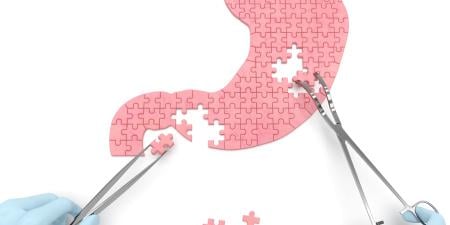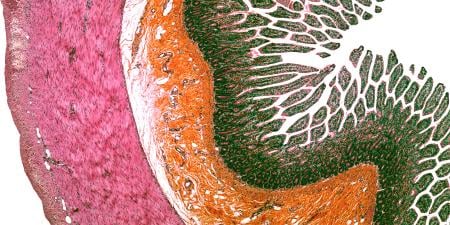If altruism had no limits, wouldn’t the world be a better place? Most certainly this is true, so how could this truth possibly conflict with one of the major teachings of medicine, primum no nocere, or “do no harm”? Merriam-Webster’s dictionary defines altruism as: “unselfish regard for or devotion to the welfare of others” [1]. What does the physician do if this “unselfish regard for devotion to others” potentially jeopardizes the health of his or her patient? And even more perplexing, how does the physician advise his or her patient when that patient is considering whether to be a living donor? In this situation, the living donor is accepting harm with the only possible benefit accruing to someone else. And, in the sorting out of these questions, which takes priority: the physician’s paternalistic idea of what would be best for the patient or respect for the autonomy of the potential donor’s right to self-determination? The first successful human organ transplantation, performed in 1954 using a living donor, raised all of these questions and, as living donation has expanded over the years, these questions have only become more prominent and important to ponder.
Altruism can be characterized as a motivation at the level of the individual. This should be seen as distinct from a moral obligation, such as an obligation to follow a religious doctrine or execute duty to one’s country, that one assumes by belonging to a group. Altruism, therefore, is a manifestation of individual autonomy. Graham Bell writes that “in the science of ethology (the study of animal behavior), and more generally in the study of social evolution, altruism refers to behavior by an individual that increases the fitness of another individual while decreasing the fitness of the actor” [2]. In this sense, altruism involves some form of sacrifice or acceptance of risk on the part of the altruistic. So, at what point does it become acceptable to subordinate patient autonomy to medical paternalism when the “actor” is willing to accept “decreased fitness” for the benefit of someone else? In other words, when does extreme altruism become pure foolhardiness, and who is responsible for making that distinction? This is the dilemma in the case of living-donor transplantation, when the living donor undertakes a surgical risk for the benefit of another.
There is no escaping the fact that the surgery to remove the transplantable graft carries a risk even when the prospective donor is in excellent health. The short-term mortality risk for living kidney donors is roughly the same as that for any patient undergoing general anesthesia—in the range of 0.031 percent [3]. For living liver donors this risk has been estimated to be in the 1 in 200 range. The most recent studies suggest that, over the long term, living kidney donors have the same life expectancy as members of the general population [3], although they may have more protein in their urine than healthy people with two kidneys [4]. There are no good long-term statistics summarizing the outcome for living donors of non-renal grafts.
But does risk automatically imply “harm”? We expose patients to all kinds of risks everyday for presumed benefits. Moreover, people willingly assume risks in their everyday lives, often much greater than those imposed by donor surgery, that have little or no direct benefit to their health [5]. The risk that the harms from kidney donation will occur is very small compared with many risks we all face in everyday life. We readily accept that the risks of surgery are justifiable when the individual being asked to accept the risk can expect a reasonable chance of receiving at least as much benefit. The principle of altruism as outlined above concludes then, that it is acceptable for an individual to choose to assume a risk of harm and “decreased fitness” in order to help someone else.
But how much benefit is the recipient of an altruistic donation likely to receive, and does the donor receive any benefit? There is ample evidence that recipients of living donor kidneys receive more benefit in terms of life-years after transplant than either patients who receive deceased-donor transplants or those who remain on dialysis [6] and that this benefit is even greater if the living-donor transplant is performed before the patient starts dialysis [7]. When questioned about the benefits they derive from their experience, almost all living donors report an improved sense of well-being, and there is evidence that their quality of life is at least as good as that of the general population many years after the donation procedure [8].
Based on the experience to date, at least for living-donor renal transplantation (for which we have the most long-term data), the harm imposed on the donor by the surgery is balanced by the benefit the recipient gains, and the process does not appear to impose an undue burden on the donor. Thus, if both the donor and recipient are informed about the risks of the surgery, the long-term consequences of the donation, and an estimate of the factors that can impact the success of the transplant, living donation as it has been practiced historically does not seem to stretch the limits of acceptable altruism.
Moreover, even though living donation does violate medicine’s “do no harm” dictum in the strictest sense, one can argue that any surgical procedure causes harm by virtue of the trauma that surgery inflicts. Long ago surgeons decided that a relativistic interpretation of primum non nocere is acceptable if benefit is to be expected. Strict adherence to the “do no harm” principle also imposes a degree of medical paternalism that may violate patients’ autonomy. A.J. Cronin argued in a recent article that
the motives for participating in living-donor kidney transplantation are likely to be many and varied. Undoubtedly, living donors are exposed to risk. However, individual autonomous agents are entitled to take risks and their individual choice to participate in donation is legitimate. Restricting the risks that autonomous agents may freely run on the basis that this is legitimate paternalism because it might conflict with a clinician’s responsibility to “do no harm” is not compelling grounds for arguing that living kidney donation should be prohibited or become much more restricted [9].
Patient autonomy and altruistic motivation clearly should have limits, however. For example, it is well accepted that older patients have higher risks for complications and death following surgery than younger patients. Moreover, it is well understood that renal function deteriorates with age, so kidneys from older donors provide less renal function to their recipients. Thus, is the harm so increased and benefit so diminished when older living donors are considered that physicians should advise against such transplants? Several reports indicate that older living donors do not necessarily face more significant short-term risks and that the transplanted kidneys’ short-term function is acceptable, although long-term follow up for the older donors and the recipients of their kidneys is lacking [10].
More recently, living donors with mild hypertension (usually defined as no more than one medication for treatment) have been used as kidney donors. The available evidence suggests that there is no increased harm to these donors and that the transplanted kidney function is similar to that of living-donor grafts retrieved from normotensive donors [11]. The evidence that obese kidney donors carry increased risk for complications and death in the long term is more worrisome. Obesity alone apparently confers an increased risk for the development of renal disease, but it is unknown whether this is accelerated in patients with only one kidney [12, 13].
If we accept that living donation is an altruistic decision that does not violate the “do no harm” maxim when “harm” is weighed against benefit, then living donation should not be limited to instances in which there is a preexisting relationship between the donor and recipient. This has provided justification for the expansion of living donation to include spouses, genetically unrelated donors, and even strangers either donating to other individuals or participating in paired donation or living-donor chains [14]. If the potential harm to the donor remains at the baseline, then, in the truest sense of altruism, it should not matter whether the benefit of the donation accrues to someone who is known to the donor or not. However, if donors are coerced, either by psychological or monetary means, the individual voluntarism of altruism is violated and all of the ethical rationale for living donation becomes suspect [15].
If individual autonomy is to be the highest priority, is any risk a fully informed donor is willing to take acceptable? To answer that question, risks must be considered in two categories; (1) risks the donor assumes relative to the expected benefits and (2) risks that the recipient would have to accept were the donor’s intent to donate strictly observed. Consider the obese person mentioned above. The amount of harm he or she assumes is unknown but choosing to be a donor could increase his or her risk of needing lifelong dialysis. One could argue that the benefit in freeing the recipient from dialysis is equal to or less than the harm of imposing an uncertain increased risk of dialysis on the obese donor.
For example, an obese 35-year-old mother wishing to donate to her 10-year-old daughter to spare her imminent dialysis, and all of the growth retardation and developmental problems children with renal failure endure, may have extreme motivation to donate to her child. Assuming that the mother is well informed of all of the risks and benefits, should medical paternalism prevent that mother from exerting her altruistic autonomy even if the mortality risk from the donor surgery may increase the risk that her child may lose a parent in the process? We exert much less paternalism in justifying sending parents into combat where arguably less altruism (a duty to country) is in play. It is difficult to argue that medical paternalism should assume more priority in the case of the maternal donor.
On the other hand, medical paternalism may be justifiable in the case where the outcome of the transplant could be jeopardized by unrestrained donor autonomy. For example, a brother known to carry hepatitis C virus or HIV may want to exert his autonomy by being allowed to donate his kidney to his sibling. This may be an extremely well-matched transplant but, because the recipient will acquire a new, potentially fatal, viral infection through the transplant, medical paternalism should take priority here to prevent a high likelihood of harm to the recipient, even if the donor’s autonomy is violated. This case puts respect for autonomy and paternalistic beneficence in direct conflict. Does the prospective recipient have the right to know that the possibility for a transplant exists? Should the doctor even mention it? Suppose both donor and recipient, fully informed, want the transplant to go forward. Is the doctor obligated to follow through if he or she believes the risk to the recipient outweighs the benefit and that the recipient’s diminished benefit may not justify the harm to the donor?
The current culture comes down on the medical paternalism side here, with most transplant clinicians likely to not move this forward. In fact, a difficult situation arises where the donor’s privacy (regarding disease status) must be maintained when informing the recipient of the reasons why a transplant from the brother is not feasible. Moreover, federal regulations essentially mandate medical paternalism toward HIV-infected donors; the intentional use of organs from HIV-infected donors for transplantation is prohibited [16].
A more nuanced situation occurs when, for example, an adult child wants to donate to an older parent whose life expectancy is significantly less than the survival time of the transplanted kidney. In this case it may be more difficult to show that the recipient will gain a benefit in terms of life years gained from the transplant. However, both the donor and the recipient may gain significant psychological or quality-of-life benefits that may be difficult to equate with the potential physical harms. Here, as in all cases of living donation, careful assessment of real and perceived benefits is critical. What do the donor and recipient believe they will gain in all the multidimensions of health, perception of health, quality of life, emotional well-being, or survival?
Living donor transplantation does impose limits on altruism because more than one individual is involved. An altruistic act, including the assumption of some risk by the “actor,” is the primary foundation for organ transplantation. However, unlimited altruism must be balanced with consideration of the risks and benefits, and all of the actors must understand them before embarking on any course of action. Often, these risks and benefits are not well documented or appreciated by the physicians who are facilitating the process. But all risks and benefits must be thoroughly understood and appreciated as a restraint on overexuberant medical paternalism. Allowing one individual to accept some risk in the name of altruism when there is little chance for benefit or significant chance for harm, no matter how difficult it may be to measure these, is still adequate justification for a paternalistic response from the physicians involved.
References
-
Altruism. Merriam-Webster Dictionary. http://www.merriam-webster.com/dictionary/altruism. Accessed Jan 25, 2012.
-
Bell G. Selection: The Mechanism of Evolution. Oxford: Oxford University Press; 2008: 367-368.
- Segev DL, Muzaale AD, Caffo BS, et al. Perioperative mortality and long-term survival following live kidney donation. JAMA. 2010;303(10):959-966.
- Ibrahim HN, Foley R, Tan L, et al. Long-term consequences of kidney donation. N Engl J Med. 2009;360(5):459-469.
-
Freeman RB, Cohen J. Transplantation risks in the real world: what does “high risk” really mean? Amer J Transplant. 2009;9(1):23-30.
-
Organ Procurement and Transplantation Network. View data reports. http://optn.transplant.hrsa.gov/latestData/viewDataReports.asp. Accessed January 26, 2012.
- Liem YS, Weimar W. Early living-donor kidney transplantation: a review of the associated survival benefit. Transplantation. 2009;87(3):317-318.
- Clemens K, Boudville N, Dew MA, et al. The long-term quality of life of living kidney donors: a multicenter cohort study. Am J Transplant. 2011;11(3):463-469.
- Cronin AJ. Allowing autonomous agents freedom. J Med Ethics. 2008;34(3):129-132.
- Minnee RC, Bemelman WA, Polle SW, et al. Older living kidney donors: surgical outcome and quality of life. Transplantation. 2008;86(2):251-256.
- Tent H, Sanders JS, Rook M, et al. Effects of preexistent hypertension on blood pressure and residual renal function after donor nephrectomy. Transplantation. 2012;93(4):412-417.
- Hsu CY, McCulloch CE, Iribarren C, Darbinian J, Go AS. Body mass index and risk for end-stage renal disease. Ann Intern Med. 2006;144(1):21-28.
- Adelman RD. Obesity and renal disease. Curr Opin Nephrol Hypertens. 2002;11(3):331-335.
- Ashlagi I, Gilchrist DS, Roth AE, Rees MA. Nonsimultaneous chains and dominos in kidney-paired donation—revisited. Am J Transplant. 2011;11(5):984-994.
-
Gabhili K, Shoja MM. What dominates living donor kidney transplantation: altruism or loss of dignity? Am J Kidney Dis. 2012;59(2):317.
- Boyarsky BJ, Hall EC, Singer AL, Montgomery RA, Gebo KA, Segev DL. Estimating the potential pool of HIV-infected deceased organ donors in the United States. Am J Transplant. 2011;11(6):1209-1217.



